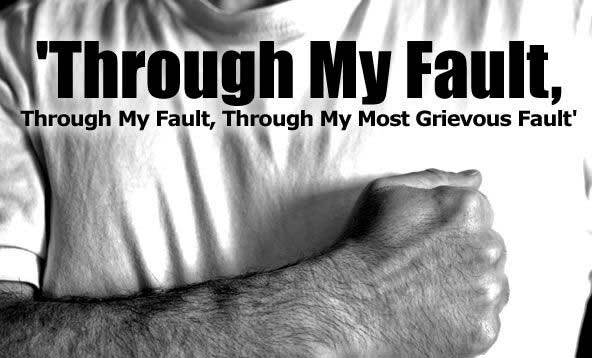There is an interesting post at Praytell on the Penitential Act of the Modern Mass, which, keep in mind, there are all kinds of variables or options.
Deacon Fritz made the point that in the Ancient Latin Mass, the PATFOTA which includes a double Confiteor, one for the priest and the other for the servers, is a private matter and in the Missa Cantata, the Introit is chanted as these private prayers are completed. of course the laity would have known these prayers from their hand missals and in the dialogue Mass instituted in the late 1950’s would have participated, if they so desired, at the Low Mass, but not the High Mass.
The Penitential Act in the normative Mass extends this preparatory rite to the entire assembly but in a truncated form with multiple choices chosen at the whim of the priest or some nebulous liturgy committee.
Two options continue to the allow for the free standing Kyrie and when there is the Rite of Blessing and Sprinkling Holy Water, the Kyrie is omitted altogether. The same is true with the prelude rites of Palm Sunday and Candlemas and perhaps one or two other liturgies which omit the free standing Kyrie.
The free standing Kyrie was never omitted in the Ancient Latin Mass and was clearly delineated from the PATFOTA and the Asperges was clearly a prelude to the PATFOTA, did not replace it.
The Kyrie in option three is link to various tropes with a variety of choices. Priests still make these up in some places. Thus, the anomaly of the Kyrie being associated with a penitential act rather than praising Christ for His gratuitous Divine Mercy as it is in the Ancient Latin Mass.
The post at Praytell also has comments showing how some priests and their congregations gloat over their “correct” choice in the Penitential Act, thus dividing parish from parish and priest from priest in this part of the Mass—a grotesque form of individualism and congregationalism that Archbishop Roche cries crocodile tears over in the allowance of the EF Mass and its ethos, which he doesn’t understand, but I digress.
Under Pope Benedict and I continue to follow his lead, the free standing Kyrie was recovered when the Rite of Sprinkling or Candlemas replaced the Penitential Act and maybe on some other occasions too.
Thus after the absolution in the Rite of Sprinkling, our parish chants the freestanding Kyrie and also on Palm Sunday, following the procession into the Church and prior to the Gloria and also at Candlemas, not to mention the Funeral Mass.
What about your parish in the Ordinary Form?

3 comments:
After reading about this subject here, some years back, I decided your argument was sound and thereafter, I treat the kyrie as distinct from the Penitential Rite, as it is, after all, something that can be added into the Penitential Rite. Since I always use the Confiteor, that means a kyrie; and when something such as the sprinkling rite takes the place of the Penitential Rite, we do the kyrie. For whatever reason, no penitential rite is called for at weddings; at funerals the reception of the body at the door seems to supplant the Penitential Rite; and thus with the ashes on Ash Wednesday. Yet in all these cases, here we do the kyrie.
Thanks for your help!
Yes, indeed, at Nuptial Masses the Kyrie should be chanted after the Introductory sentences, before the Gloria. It makes so much sense to do so. And certainly for Requiem Masses too.
This is an interesting topic and exchange. It would be interesting to read a similar discussion and meditation on the reason ‘redundant’ penitential prayers. I do not think they are redundant but sequential preparatory.
Post a Comment